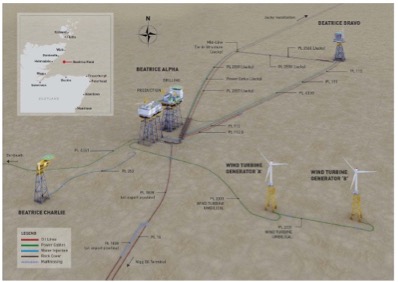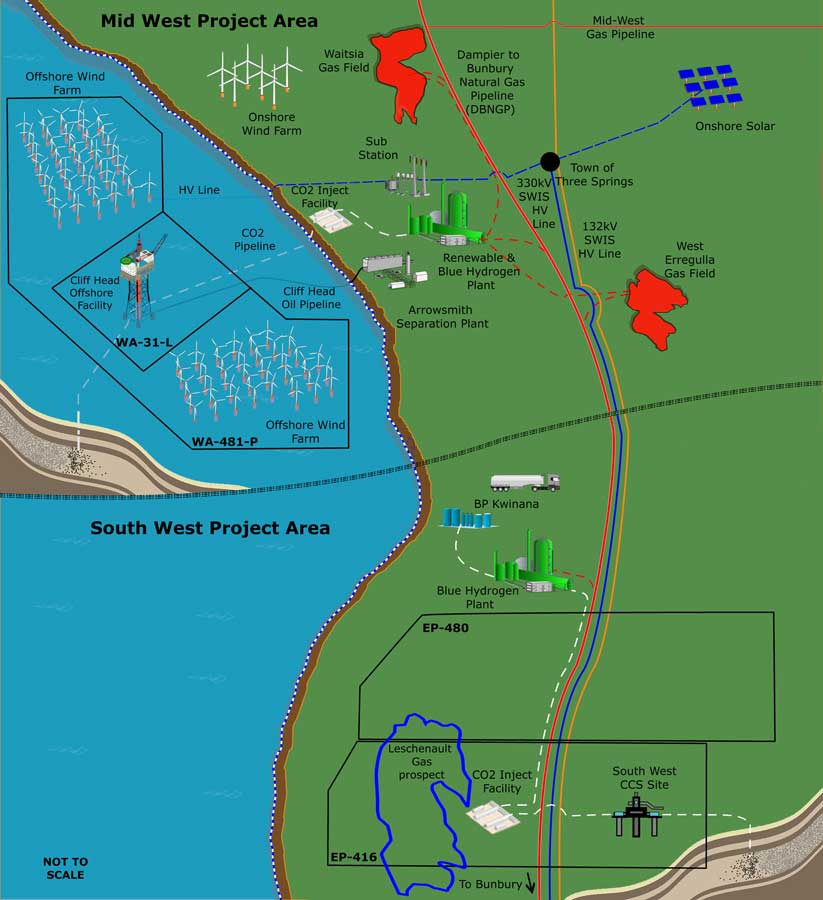Pilot Energy lights up the ASX again, set to start hydrogen and renewables focused Mid West Feasibility Studies

Pic: Matthias Kulka / The Image Bank via Getty Images
Following the successful completion of an $8M capital raising, Pilot Energy has been reinstated to the ASX and is ready to begin studies on its trifecta of hydrogen and renewable energy projects.
Pilot Energy (ASX:PGY) is back on the ASX boards and gearing up to begin feasibility studies on its Mid West wind and solar and blue hydrogen projects in Western Australia.
“The company is now well capitalised to support its business plans to become a leading energy developer and provider of clean energy projects in WA,” executive chairman Brad Lingo said.
The company has a stake in the existing oil production from WA’s Cliff Head offshore field and has also identified new business opportunities in hydrogen and renewable energy sources.
These include the option of developing wind and solar and renewable hydrogen projects and blue hydrogen and carbon capture and storage (CCS) projects across the Mid-West WA, and a hydrogen and CCS project in South-West WA.
Both locations are attractive for wind power generation due to the relatively high speed of coastal winds along the WA coastline.
A recent report by the Blue Economy CRC has highlighted offshore WA as a promising location because of its average wind speeds of 9-10m/s, which is comparable to the North Sea.
The report identified that Australian waters have a technically accessible offshore wind resource of 2,233GW – the wind resource that is less than 100km from shore, located in less than 1000m water depth and within 100km from an existing sub-station.
Some of the Blue Economy CRC’s highest rated locations in WA are aligned with Pilot’s proposed Mid West and South West project areas.
One of the key factors in pinpointing locations for offshore wind farms is the water depth, with fixed bottom turbines typically restricted to 50-60m depth. Pilot’s WA 481–P footprint is in water depths less than 60m.
Pilot’s proposal is to develop a large-scale hydrogen and renewable energy project utilising its existing oil and gas infrastructure and tenures in Western Australia’s Mid-West and South-West as anchor points for these potential developments.
One of the key questions that investors have put to Pilot is how do you combine offshore wind development with an existing offshore oil and gas operations. The company’s response is quite clear – this has been done before and the perfect example is the Beatrice Offshore Wind Farm, which is exactly what Pilot is looking to do off the Mid West Coast of Western Australia anchored off the Cliff Head Oil Field.
As with the Cliff Head Offshore Oil Field, Beatrice was first an offshore oil field and then became a demonstrator offshore wind farm using the existing oil field offshore platforms and now is Scotland’s largest operational offshore wind farm, capable of generating enough wind powered electricity for up to 450,000 homes. It is also one of the largest single sources of renewable energy generation in Scotland.
In 1980, a small oilfield of three platforms began operating around 24km from the Caithness coastline of Scotland. The Beatrice Oil Field – as it became known – was discovered and developed by Mesa Petroleum and named after Mesa founder T. Boone Pickens’ wife. The daily production of around 60,000 barrels of oil was piped to shore for storage and shipment.
By the early 2000s, the challenge of climate change brought added urgency to the need to develop new renewable sources of energy. Talisman Energy, the operator of the Beatrice Oil Field, recognised the opportunity that the Beatrice Oil Field sat in an area with an abundant and rich renewable energy resource – the winds of the North Sea.
In 2007, two 5MW demonstrator wind turbines were installed near to the Beatrice Oil Field as part of a venture between SSE and Talisman Energy (UK), evaluating the feasibility of building a commercial scale offshore wind farm in deep water at a reasonable distance from the point of grid connection.
The evaluation project was to last for five years, and the electricity generated was fed to the nearby Beatrice Alpha oil platform.

Pilot points out that the initial deployment and operation of the demonstrator turbines was so successful that it led to the expansion of the project that is now the largest operating renewable energy project in Scotland and in 2009, development work on the ‘new’ Beatrice offshore wind farm began.
With and extensive coastline and significant wind resource very much analogous in terms of the quality and consistency of the rich offshore wind resource, a larger Beatrice would be able to generate clean electricity free from carbon dioxide and in a highly efficient way.
An application for an offshore wind farm with up to 277 wind turbines was submitted in April 2007, with planning permission in principle given in October of that year.
And, in 2009, the Crown Estate, as the owner and administrator of the offshore seabed and wind rights of the United Kingdom, awarded seabed exclusivity to the then development partnership of SSE Renewables and SeaEnergy Renewables.
By 2014, the project had received all the necessary regulatory approvals to proceed with full-scale development and in May 2016 financial close was reached providing the greenlight for the construction of full-scale Beatrice Offshore Wind Farm to commence, leading to first power being exported to the National Grid in July 2018 – a mere two-years after financial close.
Pilot announced today it has now engaged key consultants to begin feasibility studies on the Mid West wind and solar and blue hydrogen projects.
“The commencement of the feasibility studies is an important step in confirming the Mid West hydrogen and CCS development plans,” Lingo said.
Late last year the company struck a two-pronged deal to partner with Perth Basin oil producer Triangle Energy (ASX:TEG).
- Triangle acquired a 78.75% stake in Pilot’s WA-481-P exploration permit, which covers 8,600sqkm of the offshore Perth Basin,; and
- Pilot and Triangle have agreed to jointly pursue the proposed development of an offshore wind and onshore wind and solar power project centred around the Cliff Head offshore production facilities and the onshore Arrowsmith separation and processing facilities.
In May 20221, Pilot completed the acquisition of Royal Energy snapping up a 21.25% interest in the Cliff Head oil field which is immediately adjacent to WA-481-P (operated by Triangle).

Provided it is feasible, being able to reconfigure existing oil and gas facilities to also support renewables can save significantly on upfront capital for wind and solar farms and help to extend the operational lifespan of the existing infrastructure.
Last month, Pilot secured a farm-in deal with Advanced Energy Transition, which will drill and fully fund the well to test Pilot’s Leschenault gas prospect in WA to earn a 50% interest in the project.
The proposed well will also test the suitability for carbon sequestration. Pilot’s EP 416 and EP 480 exploration permits overlie the area of the Western Australian government-sponsored South West Hub Carbon Capture and Storage Project
This article was developed in collaboration with Pilot Energy, a Stockhead advertiser at the time of publishing.
This article does not constitute financial product advice. You should consider obtaining independent advice before making any financial decisions.
Related Topics

UNLOCK INSIGHTS
Discover the untold stories of emerging ASX stocks.
Daily news and expert analysis, it's free to subscribe.
By proceeding, you confirm you understand that we handle personal information in accordance with our Privacy Policy.








